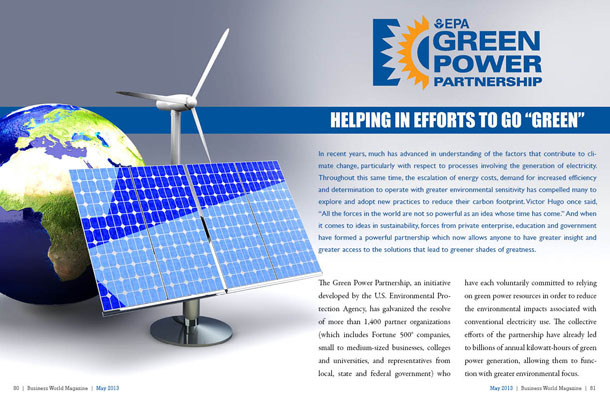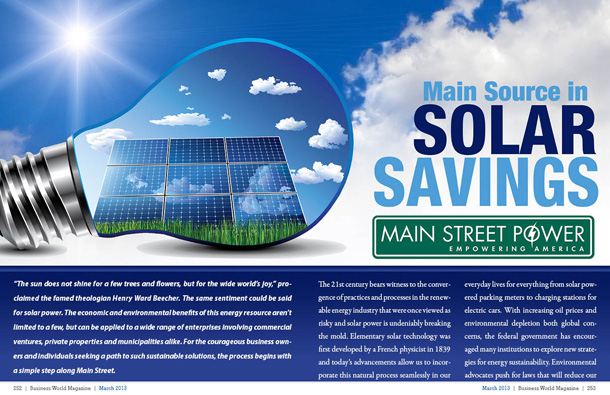
Capturing The Energy Of The High Seas
It is not often that technology borrowed from the oil industry can be said to be truly green, however this is the case with Carnegie Wave Energy. This innovative company is looking at ways to incorporate already existing technology. The CETO technology produces 100 per cent carbon free power by harnessing the power that the ocean provides. “This is a reasonably intuitive technology,” says Dr Michael Edward Ottaviano, Managing Director of Carnegie Wave Energy, “so if you don’t understand all of the details, you can still have quite a good understanding of how it works.” It is, in fact, based on what he describes as “dumb technology”, meaning that complexity has been stripped out of the offshore system, and all the complicated work of converting wave energy into electricity is done on land.
In his role as Carnegie Wave Energy’s Managing Director, Dr Ottaviano leads the way in the developing and applying the CETO technology. He has been working with the company since January 2006 as the General Manager of Technology and Innovation, and became part of the board of directors in September 2006. He has a long history of working in the Innovation industry, acting at different times as a consultant, in the research and development field, and as a divisional manager for a private Australian engineering company. In these roles he played a key role in developing new products, and advising them on IP. He holds a Doctorate in Business Administration in the field of Corporate Entrepreneurship and Innovation.
Unique in many ways
“We are an ASX listed company, which makes us a little unique in that sense, there is only couple of listed wave energy developers in the world and we are the only one in Australia,” says Dr Ottaviano. “We were originally part of the oil and gas industry, but that goes back many years. Now we have been solidly focused on developing the CETO Wave Technology for the last five years.” Dr Ottaviano has been with the company for that time, and has declared that his aim was to take “a promising but very early stage idea” and develop it into a fully functional, renewable, and commercialised power technology. “We are on the cusp at the moment,” he says.
Carnegie Wave Energy owns and operates all the intellectual property and developed the technology from the ground up. “We have a small team of about 25, made up of a broad cross-section of engineering, technical skills and commercial skills. This team has taken the idea all the way through the original early stage wave-tank testing, to complicated computation, and hydro-dynamic modelling- which allows us to do everything in a virtual world before we have to go out and build it and put it in the ocean,” says Dr Ottaviano. They have completed CETO 1 which was their proof of concept, and it has shown promising operational output. CETO 2 was a scaled down model of the technology that they plan to implement in the near future, and with this successful test Carnegie Wave Energy is well on its way to delivering a market ready product to the world. They are now working on CETO 3.
“CETO 3 is the commercial scale unit that is being tested at the moment onshore, ahead of its offshore deployment in the coming weeks,” he says. CETO is named after a Greek sea nymph, and the technology offers the potential to revolutionise power and water production on a global scale. The CETO technology harnesses the energy produced by the ocean’s waves. It then converts it into two incredibly valuable products: zero-emission electricity and zero-emission desalinated water
Thinking clean power, thinking clean water
“The big picture globally is that the wave energy, or the energy that you can harness from waves, is just an enormous resource,” says Dr Ottaviano. It is also one that he says is one of the great “untapped renewable resources” out there. “The energy is present in the ocean and is generated thousands of kilometres offshore by storms, and those storms report the energy back to shore through ocean swell,” he explains. “So one of the nice things about it, other than it is globally distributed and untapped, is that so much of the world lives on or near a coastline.” This means, he says, that not only is it available to much of the world’s population but it is also predictable. “The way our technology works is that it sits full submerged off shore, and that is unique there is no other company that does it this way. We harness that swell to drive a submerged pumping technology, which is basically what the CETO technology is.” The CETO energy is then pumped back to shore as high pressure water. Once that pressurized water comes ashore, Carnegie Wave Energy uses standard hydro-electric generators to convert that force into electricity.
“The idea is that each unit may produce around 100 kilowatts, and you have a multiplicity of those units in order to produce as much power as you needed,” says Dr Ottaviano. If your power requirements needed one or two megawatts delivered to the grid you would need 10 or 20 of the CETO units feeding the hydro turbines on shore. “It just scales depending on the demand,” he says.
This process is much like using wind farms, but is a far more predictable source of energy. Also, this technology circumvents noise pollution that is sometimes complained about when it is located near commercial or residential areas, and it also takes up almost no space on land. The negative effects that some wind farming has on bird and animal life is also negated, and CETO has also acted in a positive way in providing new habitats for ocean life. “When you put these devices on the seafloor,” says Dr Ottaviano, “they become what the fishing industry has termed a ‘fish attracting device’. Because they are submerged structures they attract fish around them.” He says as they tested the devices offshore they found that the number of marine life has increased dramatically. Fishermen have also noticed the increase in abundance and have found these areas a very good place to fish. “Nothing is environmentally benign, you put anything into an environment it will have an impact. We are just very careful about monitoring that impact.” Carnegie Wave has designed all of its technology in order to have a minimal impact, and they monitor animal interaction with any of their devices. They make sure that all of the machinery and technology is a single integrated device, and has no way to trap or damage the ocean’s ecosystem. Dr Ottaviano says that the positive effects were not planned on but make him very pleased.
Doing it differently, making light steps
Unlike hydroelectric plants, this technology does not require the building of dams or the diversions of major water sources. “This is a modular hydroelectric plant that does not require any damming of rivers, and also has a very very small onshore footprint,” says Dr Ottaviano. “You just aren’t competing with land the way that other renewable technologies do. You are offshore, and particularly in a country like Australia you have an enormous coastline and hence a large amount of opportunities to implement this technology. The other advantage that we have is that our technology is fully submerged- you wouldn’t know that we are out there. We just pump away under the surface with absolutely no aesthetic impact at all,” he says. “Traditionally, the industry has been focused on technology that sits on the surface and floats. It also generates the power there and transmits it back to shore.” This means that other technologies use subsea cables to bring the created electricity back to shore, but because much of the highly sophisticated machinery is based on the floating turbines, and that they are sitting in a highly corrosive environment that wears down the machinery very quickly. “Our whole philosophy has been to avoid complexity in the ocean and keep all the machinery there simple. We keep everything offshore ‘dumb’, and do the complicated part – the power generation – on shore.” This all equals much lower maintenance costs over the lifetime of the power plants.
With the technology that Carnegie Wave Energy has developed, they look to provide a clean safe alternative to power for Australian’s and the world. This is particularly important for Australia, where reports are projecting an increase of power demand, while a decrease in available power. This could translate into more brown-outs, or even more coal fired plants being put to use. With technology such as the CETO on the market, more power can be produced at less cost for Australia. Instead of shipping raw materials to power generators, the power is produced on site. The technology has been proven, Carnegie Wave Energy is just getting ready to implement it.









Did you know that Romania has a technical solution with the highest efficiency to capture wave power?.
Patent 108893 entitled Dynamic Engine for Sea Wave Energy Catching. A pioneering invention. It is estimated that “dynamic engine” has the ability to catching wave energy at a rate of over 80% while the other technical solutions known worldwide, are not able to capture wave energy with a higher percentage of about 10-15%. E-mail cosma.vasile@yahoo.com
Cosma Vasile. Romania.
Some information for patent “Dynamic Engine” can be found on:
Ocean energy: Wave energy | Climate TechWiki.
Summary and drawing is on page 28. [PDF] BOPI no. 9/1994 – OSIM
Link for patent “Dynamic Engine
http://bd.osim.ro/pdf/108000-/108800-/108893.pdf
Comments are closed.